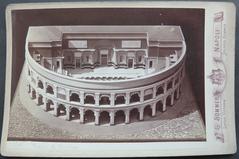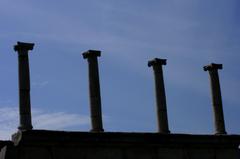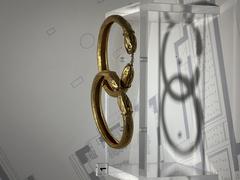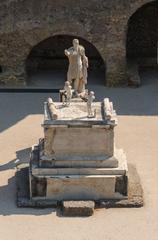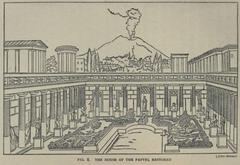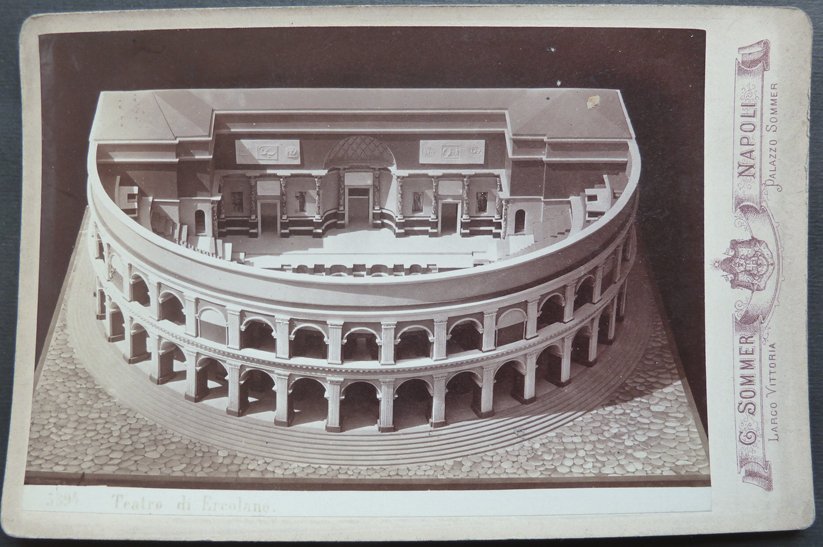
Theatre of Herculaneum: Visiting Hours, Tickets, and Historical Significance in Herculaneum, Italy
Date: 15/06/2025
Introduction
The Theatre of Herculaneum, hidden beneath the modern town of Ercolano, Italy, is a remarkable testament to the cultural and architectural sophistication of ancient Roman society. Buried approximately 20 meters under volcanic material from the catastrophic eruption of Mount Vesuvius in 79 CE, this extraordinary subterranean monument provides a unique window into Roman entertainment, civic life, and urban planning. Unlike the larger and more famous Pompeii, Herculaneum was a smaller but wealthier resort town, reflected in the theatre’s intimate size and opulent décor, including marble veneers, bronze statues, and honorific inscriptions. The site’s exceptional preservation is attributed to its unique pyroclastic burial, which protected both stone and organic materials, offering invaluable archaeological insights (The Archaeologist; World History Encyclopedia).
Today, visiting the Theatre of Herculaneum is possible only through special guided tours due to its fragile condition and subterranean setting. This guide provides comprehensive information on the theatre’s historical context, architectural features, practical visitor advice—including tickets and visiting hours—and highlights nearby attractions for a well-rounded experience.
Table of Contents
- Introduction
- Historical Background of Herculaneum and the Theatre
- The Catastrophe of 79 CE and Preservation
- Rediscovery and Archaeological Significance
- Modern Conservation and Excavations
- Architectural Features of the Theatre
- Visiting Information
- Comparative Analysis: Herculaneum, Pompeii, and Naples Theatres
- Nearby Attractions
- Frequently Asked Questions (FAQ)
- Visuals and Media
- Conclusion
- References
Historical Background of Herculaneum and the Theatre
Herculaneum was a thriving Roman town near Naples, renowned for its affluent residents and refined urban layout. Traditionally believed to have been founded by Hercules, the city flourished as a seaside retreat for Rome’s elite during the Republic and Imperial periods. The town’s exclusivity is evident in its luxurious villas, elaborate mosaics, and advanced infrastructure (The Archaeologist).
The Theatre of Herculaneum, constructed during the Augustan period (27 BCE–14 CE), served as a central venue for dramatic performances, civic ceremonies, and public gatherings. With an estimated capacity of 2,500 spectators, the theatre reflects both Greek and Roman influences in its design and decoration.
The Catastrophe of 79 CE and Preservation
On August 24, 79 CE, Mount Vesuvius erupted, burying Herculaneum under approximately 20 meters of superheated pyroclastic material. Unlike Pompeii, which was smothered by ash, this unique burial preserved the city in extraordinary detail, including organic materials like wood, textiles, and furniture. The theatre, along with other structures, remained remarkably intact, providing a rare archaeological snapshot of Roman life (The Archaeologist).
Rediscovery and Archaeological Significance
Rediscovered in 1709 by a farmer digging a well, the Theatre of Herculaneum was the first major structure found in the city. Early excavations, beginning in 1738 under Spanish engineer Rocque Joaquín de Alcubierre, used tunneling methods that prioritized art recovery for royal collections but often damaged the site. Later, detailed mapping and improved excavation techniques revealed the theatre’s full scale and artistic treasures (historyandarchaeologyonline.com).
The theatre’s preservation, including carbonized wood, painted stucco, mosaics, and statuary, is unparalleled. Many statues and artifacts from the theatre are now housed in the Naples Archaeological Museum.
Modern Conservation and Excavations
Since the 18th century, excavations have continued with increasing emphasis on preservation. The Herculaneum Conservation Project, launched in the 21st century, has stabilized the theatre, mitigated water damage, and preserved fragile organic remains. Modern technologies like ground-penetrating radar and 3D modeling are continually revealing new information about the theatre’s structure and use (The Archaeologist).
Architectural Features of the Theatre
Location, Layout, and Capacity
The Theatre of Herculaneum is located about 20 meters underground and follows the classic Roman theatre design: a semi-circular cavea (seating area) divided into three sections (summa, media, and ima), an orchestra, and a stage building (scaenae frons). Access is via original stairways carved in volcanic tufa, including double flights of stairs leading to a circular ambulacrum. The theatre could accommodate roughly 2,500 spectators (herculaneum.uk).
Construction Materials and Decoration
Constructed from local tufa and brick, the theatre’s exterior was adorned with red stucco pilasters. Inside, it featured elaborate marble veneers, bronze and equestrian statues, and honorific inscriptions commemorating local dignitaries such as Marcus Nonius Balbus and Appius Claudius Pulcher (World History Encyclopedia).
Archaeological Discovery and Challenges
Early excavations relied on tunnels, some of which damaged the structure. Later, careful documentation and mapping improved understanding and preservation. Despite ongoing conservation, challenges like dampness, limited lighting, and difficult underground access persist. Today, access is limited to small guided groups, and safety gear is provided (finestresullarte.info).
Visiting Information
Visiting Hours
The Theatre of Herculaneum is accessible only via guided tours, typically offered on Sunday mornings in small groups to minimize impact. The broader Herculaneum Archaeological Park is generally open daily from 8:30 AM to 7:30 PM (April–October) and until 5:00 PM (November–March), with last entry one hour before closing (Herculaneum Tickets). Schedules may change due to conservation, so always check the official site before your visit.
Tickets and Booking
Standard tickets for the archaeological park are approximately €18 (as of 2025), with reductions for EU citizens aged 18–24 and free entry for children under 18 (Italy Sights). Theatre tours require separate booking due to limited capacity; tickets can be reserved online through the Parco Archeologico di Ercolano. Consider tourist passes like the Campania Artecard for combined entry to regional sites.
Guided Tours and Accessibility
Guided tours are mandatory for theatre access and provide in-depth insights into the site’s history and preservation. The underground setting involves descending stairs and navigating narrow, dimly lit tunnels, making the site unsuitable for wheelchairs and challenging for those with mobility issues. Sturdy shoes and warm clothing are recommended.
Travel Tips
- Arrive early or late in the day to avoid crowds.
- Bring water and snacks, particularly in summer.
- Photography is permitted (without flash or tripods) in most areas, subject to tour guide instructions.
- Combine your visit with nearby attractions for a richer experience.
Comparative Analysis: Herculaneum, Pompeii, and Naples Theatres
The Theatre of Herculaneum stands apart due to its underground setting, exceptional preservation, and exclusive guided access. By contrast, the Theatre of Pompeii is larger, open-air, and more accessible but receives heavier tourist traffic and exhibits greater structural damage. Naples’ ancient theatre, while historically significant, is less immersive and largely overbuilt by the modern city (World History Encyclopedia; Hey Explorer).
Herculaneum’s theatre, benefiting from deeper volcanic protection, preserves not only stone but also organic materials and decorative details. Its limited access ensures a quieter, more contemplative experience compared to the busier Pompeii.
Nearby Attractions
- Herculaneum Archaeological Park: Explore the well-preserved ruins, including the House of the Bicentenary and the Villa of the Papyri (Italy’s Dream Tourism).
- MAV (Virtual Archaeological Museum): Offers interactive exhibits and virtual reconstructions.
- Naples Archaeological Museum: Home to artifacts from both Herculaneum and Pompeii.
- Oplontis, Stabiae, Boscoreale: Additional Vesuvian sites showcasing Roman villas and daily life (TripAnthropologist).
- Pompeii: The larger, more famous archaeological site, easily reached by train.
Frequently Asked Questions (FAQ)
Q: What are the Theatre of Herculaneum visiting hours?
A: The theatre is open to the public only via guided tours, typically on Sunday mornings. Check the official site for current availability.
Q: How can I buy tickets?
A: Purchase tickets online or at the park entrance. Advance booking is essential for theatre tours.
Q: Is the theatre accessible for people with disabilities?
A: The underground location and tunnel access make it unsuitable for wheelchair users and difficult for those with mobility impairments.
Q: Are guided tours available?
A: Yes, guided tours are required for the theatre and are strongly recommended for the broader site.
Q: What is the best way to reach Herculaneum from Naples?
A: Take the Circumvesuviana train to Ercolano Scavi station for a direct and convenient connection.
Visuals and Media
For a preview, explore the interactive map and virtual tour on the Parco Archeologico di Ercolano website. High-resolution images and descriptive alt text are available on our site to enhance your planning.
Conclusion
The Theatre of Herculaneum provides an unparalleled, immersive journey into Roman history, distinguished by its unique preservation, underground setting, and cultural significance. Due to limited access and its delicate state, advance planning and respectful visitation are essential. Combine your visit with other archaeological and historical sites in the area for a comprehensive exploration of ancient Campania.
For exclusive audio guides, updates, and more expert content, download the Audiala app and follow us on social media.
References
- The Archaeologist: Rediscovery of Herculaneum
- herculaneum.uk: Theatre of Herculaneum
- Italy Sights: Visiting the Theatre of Herculaneum
- World History Encyclopedia: A Visitor’s Guide to Herculaneum
- finestresullarte.info: Herculaneum Ancient Theater Reopens
- historyandarchaeologyonline.com: Rediscovery and Excavation
- Herculaneum Tickets: Hours and Prices
- Parco Archeologico di Ercolano: Official Tickets
- Italy’s Dream Tourism: Herculaneum Highlights
- Hey Explorer: Pompeii or Herculaneum?
- TripAnthropologist: Pompeii vs Herculaneum
